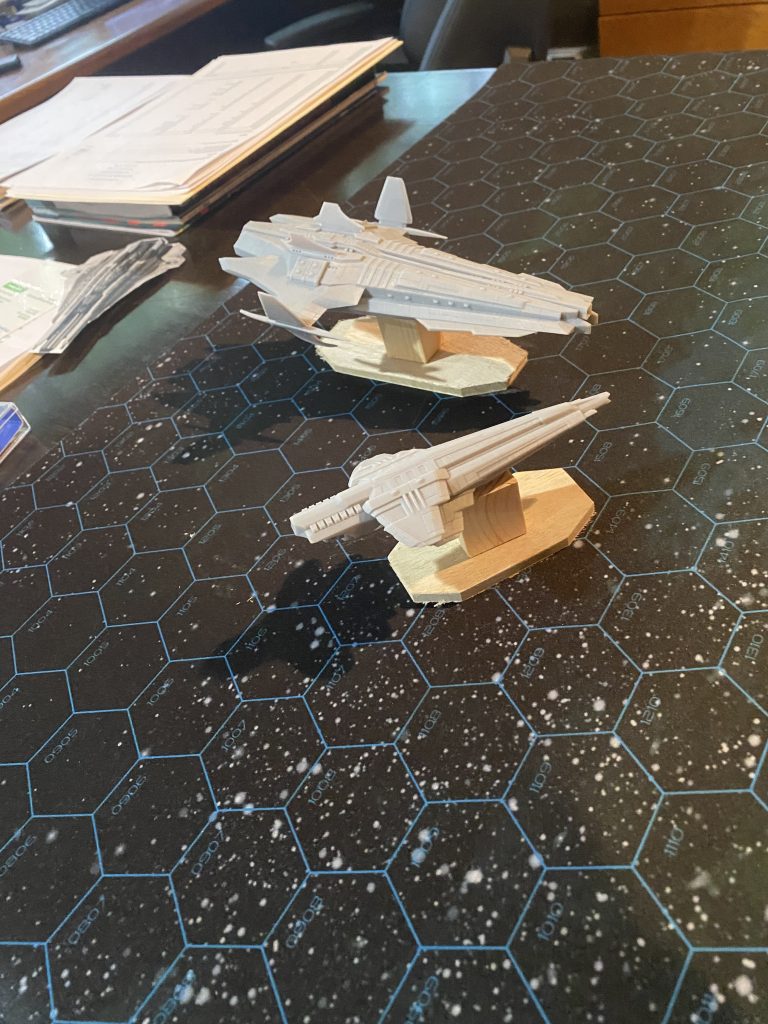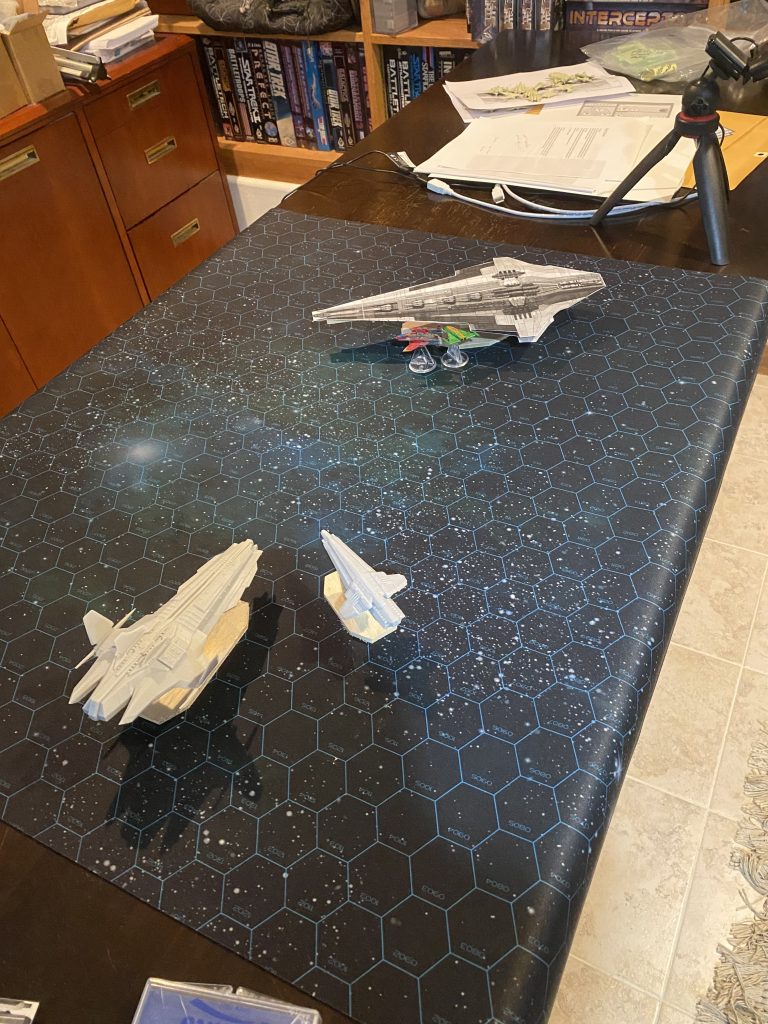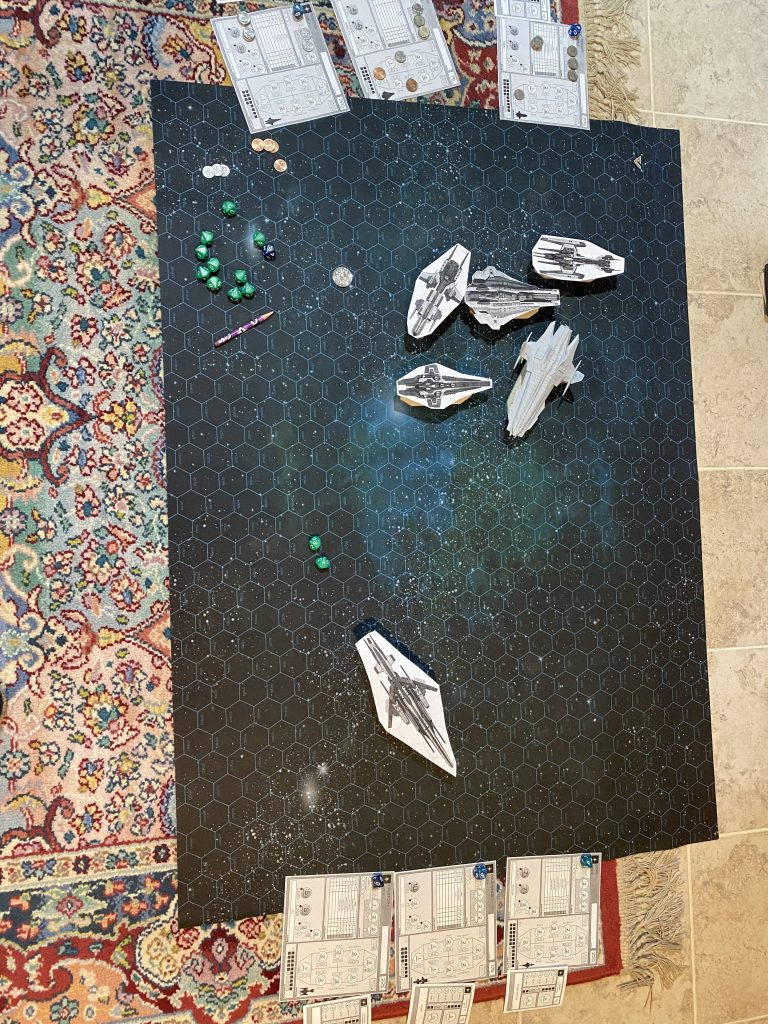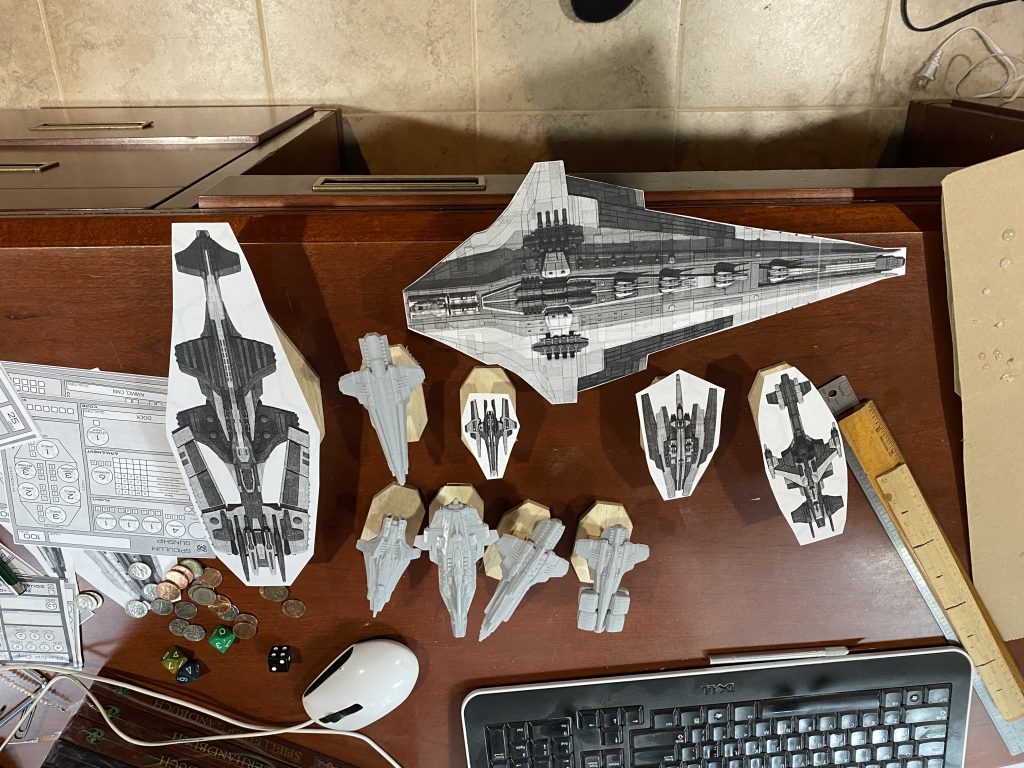Aetherstream: Leviathan Developer’s Blog #2
Another productive week down. This week we made a few changes in how we track and record movement for the ships and have started to look for places where we can streamline game play and keep the focus of the game on the action and not track too many numbers.
By request, this week I will talk a little bit more about movement and the models. This game is designed to use the same maps as Interceptor. The scale of the models and stands, as seen in the pictures below, has even the smallest ships covering 2-hexes, with the largest being 8-hexes long. Movement will be much more free-form in Leviathan, there is no movement template.
In the Basic game, a valid move is one where ships are not overlapping on the play area. We have a few ideas that may help make this easier, but we are not quite ready to reveal those yet. Even large ships should be able to move around relatively quickly and if velocity is kept at a manageable level, they may stay on the play area.
Given the size of the ships, Leviathan will feel better with a little bit more table space to open up maneuvering options. While there are not yet rules for extending the play area as ships move beyond it, that is one of the options we plan on playtesting and including as an optional rule.
Good news for Interceptor fans as well! The models will still be useful for this game as well. The fighter models will represent fighter groups sized in flights of four fighters or a squadron of twelve fighters. Fighters are fast and powerful, but vulnerable to defensive weaponry and will be knocked out quickly. Fighters will move and attack after all the big ships are done with movement, but prior to resolving their fire. The best defense against fighters is having your own fighters.
As promised, here are some pictures of the prototypes we have printed (3d and otherwise) along with mockups of the base and some early playtest pictures.




